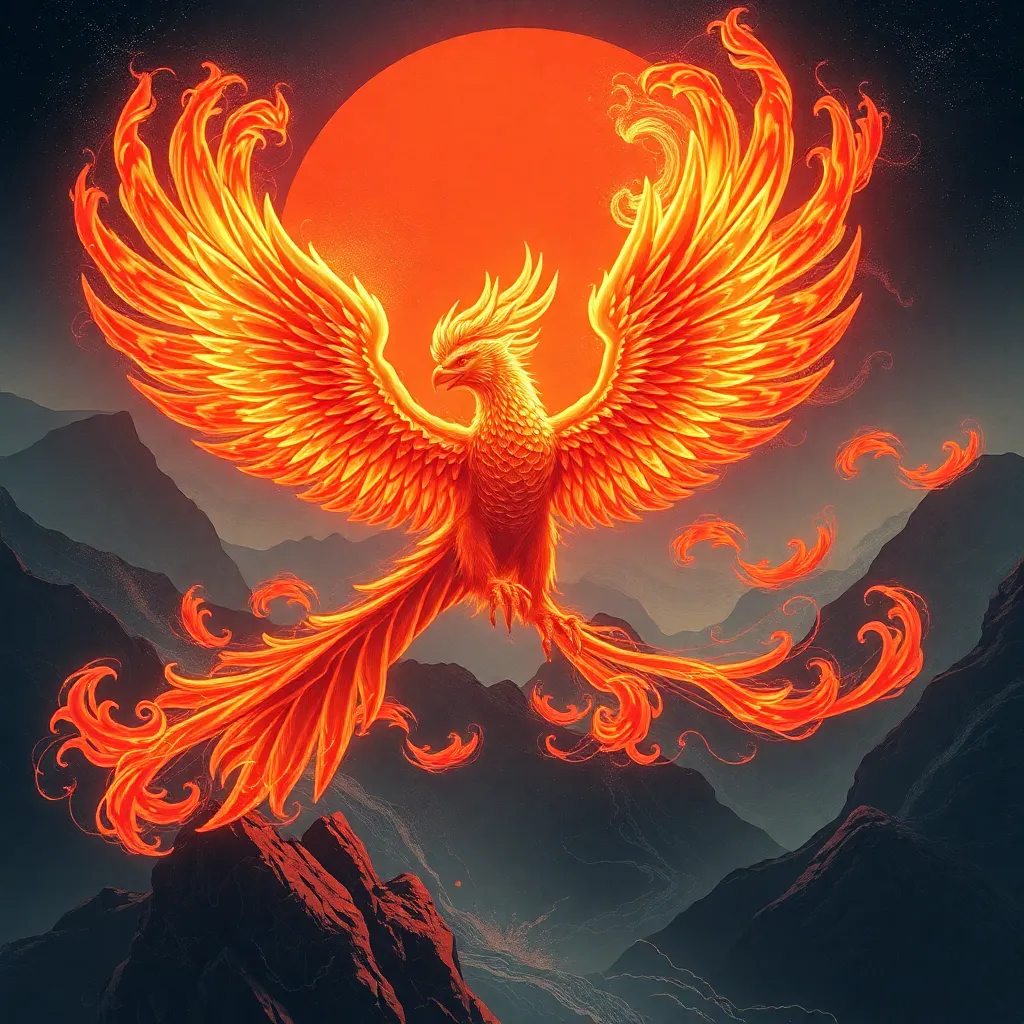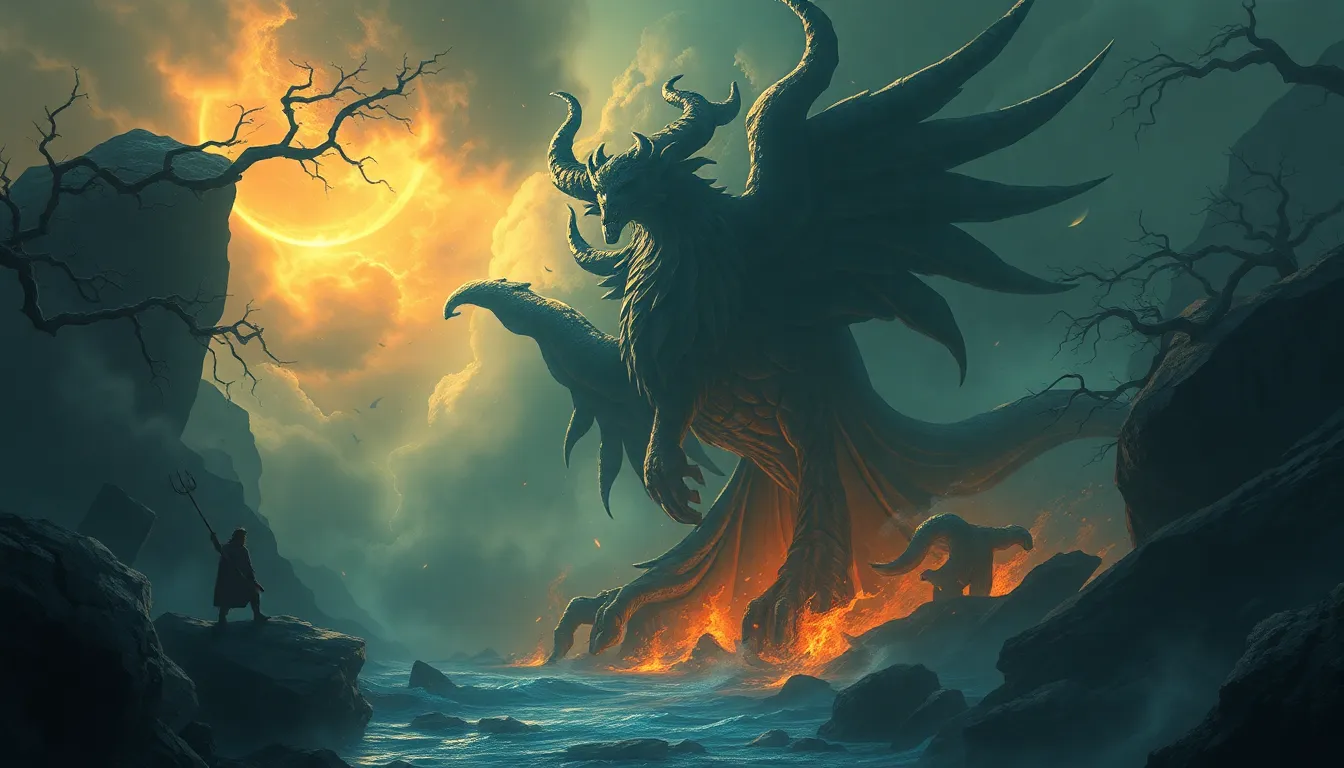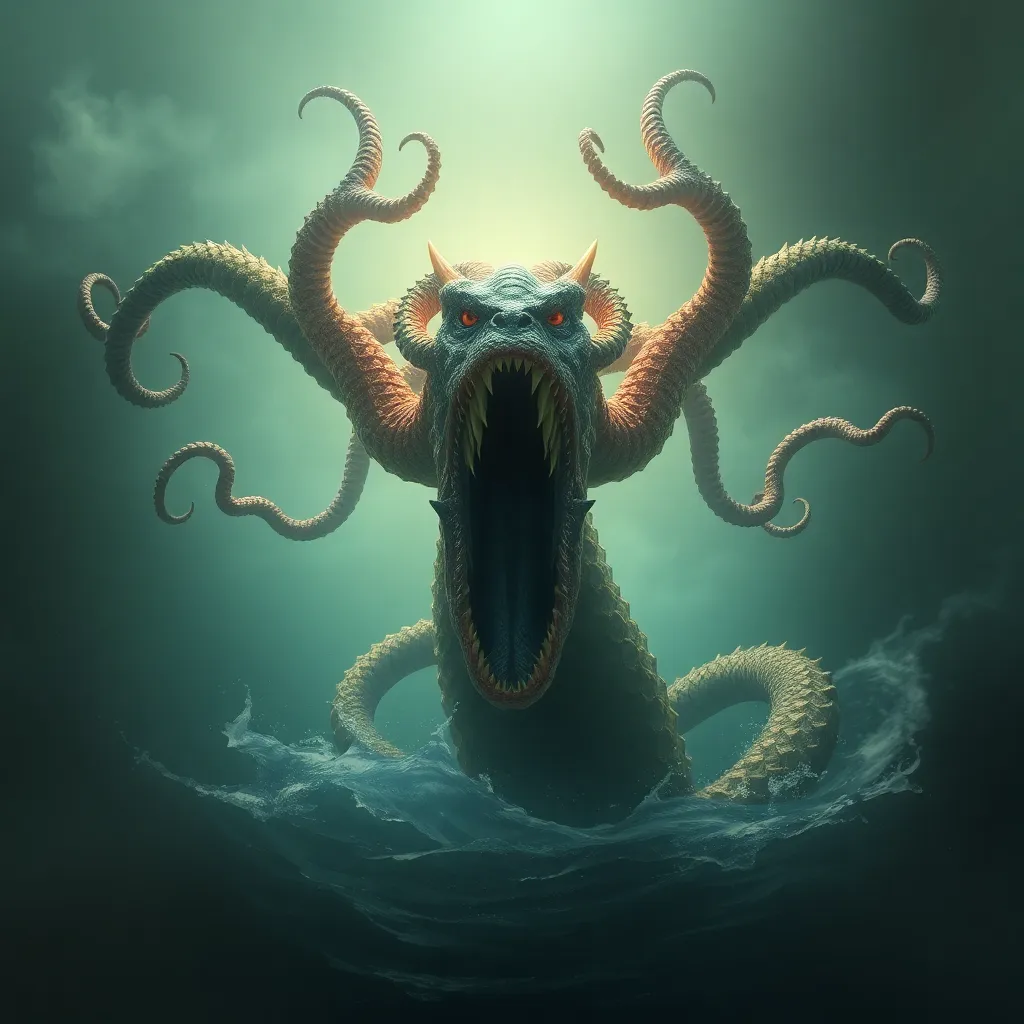The Fenghuang: A Divine Bird of Fire and Renewal in Chinese Legend
I. Introduction to the Fenghuang
The Fenghuang, often referred to as the Chinese Phoenix, holds a revered place in Chinese culture and mythology. This mythical bird is not merely a creature of legend; it embodies significant cultural values and ideals. The Fenghuang symbolizes high virtue, grace, and prosperity, and is often associated with the Empress in Chinese folklore, contrasting with the male counterpart, the Dragon, which represents the Emperor.
In addition to its regal associations, the Fenghuang is a powerful symbol of renewal and rebirth. Its narrative often intertwines themes of transformation, emphasizing the cyclical nature of life and the renewal of spirit, much like the changing seasons. This article delves into the rich tapestry of the Fenghuang’s history, characteristics, and its lasting cultural significance.
II. Historical Origins of the Fenghuang
A. Ancient texts and earliest references
The origins of the Fenghuang can be traced back to ancient Chinese texts, where it is depicted in various forms. One of the earliest references is found in the “Shan Hai Jing” (Classic of Mountains and Seas), a compilation of myths and geography from the early Chinese dynasties. The text describes the Fenghuang as a bird of great beauty and celestial origin, often associated with the sun and the elements.
B. Evolution of the Fenghuang in Chinese mythology
Over the centuries, the Fenghuang has evolved in its representation and significance. During the Han dynasty, it became more closely associated with the concept of harmony and balance, embodying the ideal union of yin and yang. Through subsequent dynasties, the Fenghuang’s depiction became increasingly ornate, reflecting the artistic styles and cultural values of the time.
III. Characteristics and Symbolism of the Fenghuang
A. Physical attributes and distinctive features
The Fenghuang is often described as a bird of extraordinary beauty, adorned with vibrant plumage that represents the five fundamental elements: wood, fire, earth, metal, and water. Its body is typically depicted as a blend of various birds, such as the peacock, mandarin duck, and swallow, showcasing a harmonious mix of features that symbolize its divine nature.
B. Symbolism of fire, renewal, and harmony
- Fire: The Fenghuang is closely associated with fire, representing passion, transformation, and the warmth of life.
- Renewal: Its cyclical nature reflects themes of rebirth, echoing the seasonal cycles of nature.
- Harmony: The Fenghuang embodies the balance of dualities, often viewed as a symbol of peace and prosperity.
IV. The Fenghuang in Chinese Art and Literature
A. Representation in traditional art forms
The Fenghuang has been a prevalent motif in various forms of Chinese art, including painting, sculpture, and embroidery. In traditional Chinese paintings, the Fenghuang is often depicted amidst flowers, symbolizing beauty and harmony. Its image can also be found in architectural details of temples and palaces, signifying the auspiciousness of the space.
B. Depictions in classical literature and poetry
In classical literature, the Fenghuang appears in numerous poems and stories. It is often used as a metaphor for noble qualities and virtuous actions. For example, poets may describe a noble woman as a Fenghuang, emphasizing her grace and dignity. The bird’s presence in literature reflects its role as an emblem of hope and aspiration.
V. The Fenghuang in Folklore and Myths
A. Popular legends surrounding the Fenghuang
Numerous legends surround the Fenghuang, with one of the most famous being the tale of the Fenghuang’s flight. According to this legend, the Fenghuang would only appear during times of peace and prosperity, serving as a harbinger of good fortune. Its song was said to bring joy and happiness, resonating with those who heard it.
B. Tales of the Fenghuang in relation to other mythical creatures
The Fenghuang often interacts with other mythical creatures in Chinese mythology. For instance, it is frequently paired with the Dragon, representing the masculine and feminine principles of the universe. This duality highlights the importance of balance in life, where both forces must coexist for harmony to prevail.
VI. Cultural Significance of the Fenghuang Today
A. Role in modern Chinese festivals and celebrations
Today, the Fenghuang continues to hold a significant place in Chinese culture, especially during festivals and celebrations. During events like the Lunar New Year, the Fenghuang is featured in various decorations, symbolizing the ushering in of good fortune and joy. Its image is often used in dance performances and parades, captivating audiences with its grace and beauty.
B. Influence on contemporary art and fashion
In contemporary art and fashion, the Fenghuang remains a popular motif. Designers often incorporate its imagery into clothing and accessories, reflecting a blend of traditional symbolism with modern aesthetics. The Fenghuang’s representation in contemporary media serves as a bridge between ancient traditions and modern cultural expressions.
VII. Comparative Analysis with Other Mythical Birds
A. Similarities with the Phoenix in Western mythology
The Fenghuang bears a striking resemblance to the Western Phoenix, both being symbols of renewal and rebirth. However, while the Phoenix is often associated with fire and destruction followed by resurrection, the Fenghuang represents a more harmonious cycle of life, emphasizing balance rather than chaos.
B. Distinctions between the Fenghuang and other cultural symbols
Unlike other mythical birds in various cultures, the Fenghuang is uniquely tied to the concepts of femininity and virtue in Chinese society. Its role as a companion to the Dragon further distinguishes it from other symbols, highlighting the interplay between male and female energies in Chinese mythology.
VIII. Conclusion: The Enduring Legacy of the Fenghuang
A. Reflection on the Fenghuang’s impact on Chinese identity
The Fenghuang remains an enduring symbol of Chinese identity, embodying ideals of grace, harmony, and renewal. Its rich history and cultural significance continue to inspire generations, serving as a reminder of the values that define Chinese civilization.
B. Future of the Fenghuang in cultural expression and storytelling
As society evolves, the Fenghuang’s legacy will likely adapt, influencing new forms of artistic expression and storytelling. Its timeless themes of transformation and balance resonate with the human experience, ensuring that the Fenghuang will remain a vital symbol in both traditional and contemporary contexts.




